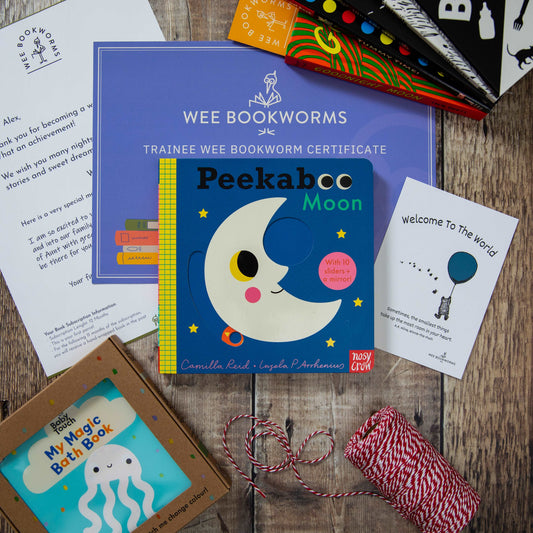I'm certain that you have heard the phrase, "Don't judge a book by its cover" . I'm also certain that we have all done it! First impressions, well, they impress! Especially when you are in a bookshop, you are simply drawn to books with pretty covers. This 'attraction' is, perhaps, a little less intense when we shop online for books. But aren't book covers gorgeous nowadays?
It feels like, especially in recent years, covers have gotten more and more creative and colourful. In the same way, you may have noticed that children's picture books have also changed over the last ten or so years. The illustrations have become much more elaborate, and the covers often sparkle and shine. Take a peek at our photograph for one of our Children's Book Subscriptions, for example:
Of course, all of this has one certain reason: to convince us to buy that beautiful, shiny book in front of us. It's all about marketing! It doesn't matter what the book is about, as long as it is pretty! Well, of course, that isn't really accurate, but I do think that book covers can definitely attract readers.
Do you think that book covers have always been beautiful? The honest answers is yes and no. To be honest, book covers have gone through some interesting and intense changes. Do you want to know more? Well, then read on!
A very short summary of the history of book covers
Before the Middle Ages, during the Middle Ages & the Renaissance
- At this point in time, books are incredibly valuable. 'Books' (or scrolls) have already been around since 500 BC. Back then, they were handwritten and often engraved. Interestingly, it is said that the first actual book was created in China! A collection of Buddhist Zen teachings was printed in the 14th century, and then, of course, in 1454, Johannes Gutenberg invented the printing press and the Gutenberg Bible was 'published'!
The book bindings were often made of leather with metal clasps to protect the content. Smaller hardcover books without claps came into being in the 16th century.

By King Baudouin Foundation, photo: Philippe de Formanoir, CC BY-SA 4.0, https://commons.wikimedia.org/w/index.php?curid=76206411
Then, from the 17th century on, books were touched up with gold, red, or blue. The binding process became a little easier! Interestingly, until the 19th century, books were often sold without the cover (odd, right?). After your purchase, you would then have to go to a specialist bookbinder to get your book put together, so to speak.
Glorious changes in the 19th century
- From the 1820s on, this changed! Finally, the binding process was done by the manufacturer too! New machines and presses made it much easier to create pretty books.
Penny Dreadfuls appeared everywhere, with spooky covers, of course.
At that point in time, paperbacks were often seen as 'silly'. Hardbacks, on the other hand, were understood to be for special works of literature.
- Around the 1840s, leather was replaced by fabric covers. Gorgeous golden illustrations, later with more colourful decorations, appeared, and thus, book covers, as we know them, were born!
As mentioned above, this is a very brief summary of the evolution of the book covers. It does illustrate, however, how book bindings have changed, and how, gradually, they became an important marketing tool.
Nowadays, bookworms are quite the specialists when it comes to detecting "cheap"-looking book covers. Yes, we've all been influenced by beautiful illustrations, glitter, and glam!












